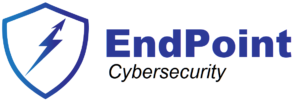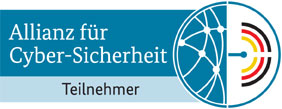Introduction to CISA’s Secure by Design Initiative
What is Secure by Design?
Secure by Design products are those where the security of the customers is a core business requirement, not just a technical feature. Secure by Design principles should be implemented during the design phase of a product’s development lifecycle to dramatically reduce the number of exploitable flaws before they are introduced to the market for broad use or consumption. Products should be secure to use out of the box, with secure configurations enabled by default and security features such as multi-factor authentication (MFA), logging, and single sign on (SSO) available at no additional cost. (Source)
Secure by Design is an initiative by the Cybersecurity and Infrastructure Security Agency (CISA) aimed at integrating cybersecurity practices into the design and development phases of technology products and systems. The goal is to ensure that security is considered a fundamental element from the outset, rather than an afterthought. This approach helps in reducing vulnerabilities and enhancing the resilience of systems against evolving cyber threats.
Sounds familiar?
Yes, because we know for the past 20 years or more the Microsoft initiative: Secure by design – Secure by default – Secure operations
Who Should Be Interested?
This initiative is crucial for software developers, system designers, engineers, and manufacturers involved in creating and deploying digital solutions. It is also vital for policy makers and business leaders who oversee the management and governance of cybersecurity risks in their organizations.
Why Is It Important?
Incorporating cybersecurity measures early in the design process can significantly mitigate risks, reduce costs associated with addressing security flaws after deployment, and improve consumer trust. Secure by Design supports not only the protection of individual products but also the overall security posture of national infrastructure and business ecosystems.
Focus of the Initiative
The primary focus of the Secure by Design initiative is to create a systematic, standardized approach to cybersecurity, ensuring that every phase of technology development includes security as a core component. This involves collaborative efforts among stakeholders to adopt best practices that promote security from the initial stages of product and system development.
Topics Covered by the Initiative
Development and Implementation of Security Practices
- Guidelines for integrating security into software development life cycles (SDLC).
- Establishment of security benchmarks and standards for new technologies.
Stakeholder Collaboration
- Engagement with private sector, academia, and international bodies to harmonize security standards.
- Public-private partnerships to advance security innovations and solutions.
Regulatory Compliance and Risk Management
- Frameworks for compliance with emerging laws and standards in cybersecurity.
- Strategies for risk assessment and management integrated into the design process.
Implementation and Auditing
How to Implement
- Create a Secure Software Development Lifecycle with security protocols and checklists tailored to each stage of the design and development processes.
- Incorporate automated security testing tools to assess vulnerabilities during the development phase.
- Continuous monitoring and updating of security measures as part of ongoing maintenance.
Auditing
- Regular security audits conducted by internal or third-party auditors to ensure adherence to established standards.
- Use of automated auditing tools to provide ongoing assessments of security posture.
Responsibility and Governance
Who Is Responsible?
- Chief Information Security Officers (CISOs) and IT managers are primarily responsible for overseeing the implementation of Secure by Design principles.
- Developers, engineers, and product managers are accountable for incorporating these principles into their workflows and outputs.
Governance
- Establishment of a governance structure to enforce security standards and practices.
- Regular reviews and updates to security policies to align with technological advancements and threat landscapes.
Conclusion and further steps
CISA’s Secure by Design initiative represents a proactive shift in cybersecurity strategy, emphasizing the importance of integrating security at the foundational level of technology development. By fostering a collaborative environment among all stakeholders, it aims to standardize and strengthen cybersecurity practices across industries, thereby enhancing the security and resilience of digital infrastructures and systems.
CISA’s Secure by Design Alert Series
highlights the prevalence of widely known and documented vulnerabilities, with available and effective mitigations, that have not been eliminated. Alerts are released in response to threat actor activity, but further demonstrate how secure by design software development can help reasonably protect against malicious cyber actors successfully exploiting predictable and well-known vulnerabilities.
Check here their page for Alerts: https://www.cisa.gov/securebydesign/alerts
Secure by Design Blogs
Learn what’s top of mind at CISA and our efforts to help make technology products secure by design.
https://www.cisa.gov/securebydesign/blogs
The post Introduction to CISA’s Secure by Design Initiative first appeared on Sorin Mustaca on Cybersecurity.


